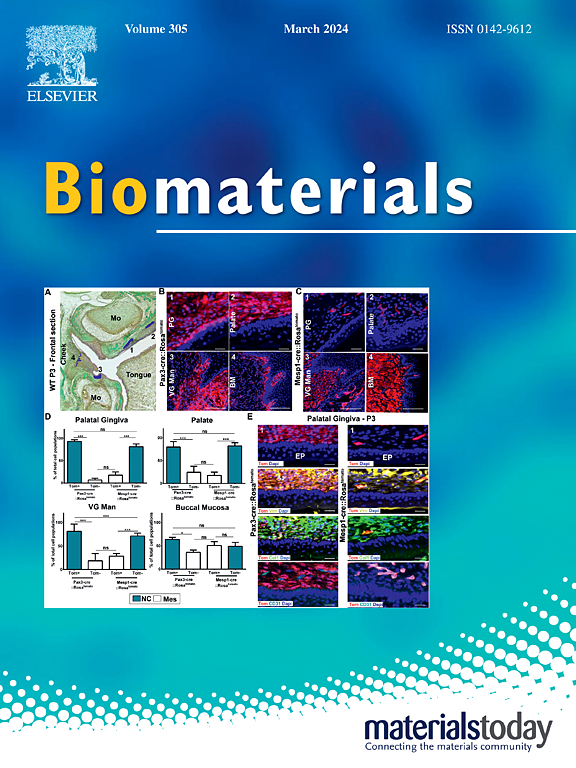利用声波响应式纳米换能器精确调节细胞活性
IF 12.8
1区 医学
Q1 ENGINEERING, BIOMEDICAL
引用次数: 0
摘要
超声波作为一种机械能,具有深入穿透组织的独特能力,可对细胞活动进行非侵入性操纵。将纳米材料与超声波结合使用,可在局部纳米材料界面上利用超声波产生的电、光、声或化学刺激对细胞活动进行简单、高效、时空可控和微创的调节。这项技术可以对细胞活动进行精确的局部调控,这对于研究和了解复杂的生物过程至关重要,同时也为生物学和医学领域的研究、诊断和治疗提供了新的机遇。在本文中,我们将回顾纳米材料在超声细胞调控方面的最新进展,重点介绍声波响应纳米材料与超声波结合的潜在应用和取得的进展。本文章由计算机程序翻译,如有差异,请以英文原文为准。

Precise modulation of cell activity using sono-responsive nano-transducers
Ultrasound, as a form of mechanical energy, possesses a distinctive ability to deeply penetrate tissues, allowing for non-invasive manipulation of cellular activities. Utilizing nanomaterials in conjunction with ultrasound has enabled simple, efficient, spatiotemporally controllable, and minimally invasive regulation of cellular activities with ultrasound-generated electric, optical, acoustic, or chemical stimuli at the localized nanomaterials interface. This technology allows for precise and localized regulation of cellular activities, which is essential for studying and understanding complex biological processes, and also provides new opportunities for research, diagnostics, and therapeutics in the fields of biology and medicine. In this article, we review the state-of-the-art and ongoing developments in nanomaterials-enabled ultrasound cellular modulation, highlighting potential applications and advancements achieved through the integration of sono-responsive nanomaterials with ultrasound.
求助全文
通过发布文献求助,成功后即可免费获取论文全文。
去求助
来源期刊

Biomaterials
工程技术-材料科学:生物材料
CiteScore
26.00
自引率
2.90%
发文量
565
审稿时长
46 days
期刊介绍:
Biomaterials is an international journal covering the science and clinical application of biomaterials. A biomaterial is now defined as a substance that has been engineered to take a form which, alone or as part of a complex system, is used to direct, by control of interactions with components of living systems, the course of any therapeutic or diagnostic procedure. It is the aim of the journal to provide a peer-reviewed forum for the publication of original papers and authoritative review and opinion papers dealing with the most important issues facing the use of biomaterials in clinical practice. The scope of the journal covers the wide range of physical, biological and chemical sciences that underpin the design of biomaterials and the clinical disciplines in which they are used. These sciences include polymer synthesis and characterization, drug and gene vector design, the biology of the host response, immunology and toxicology and self assembly at the nanoscale. Clinical applications include the therapies of medical technology and regenerative medicine in all clinical disciplines, and diagnostic systems that reply on innovative contrast and sensing agents. The journal is relevant to areas such as cancer diagnosis and therapy, implantable devices, drug delivery systems, gene vectors, bionanotechnology and tissue engineering.
 求助内容:
求助内容: 应助结果提醒方式:
应助结果提醒方式:


